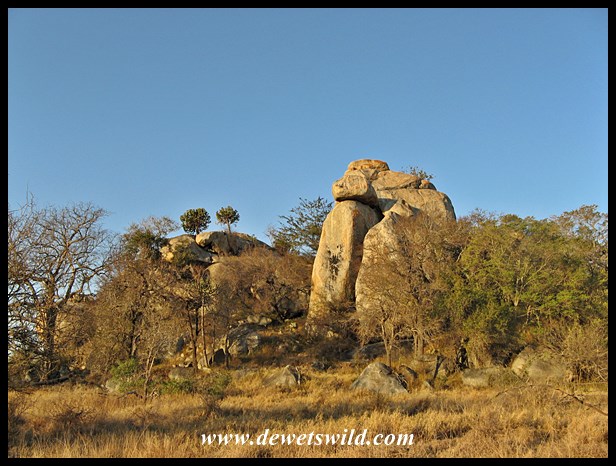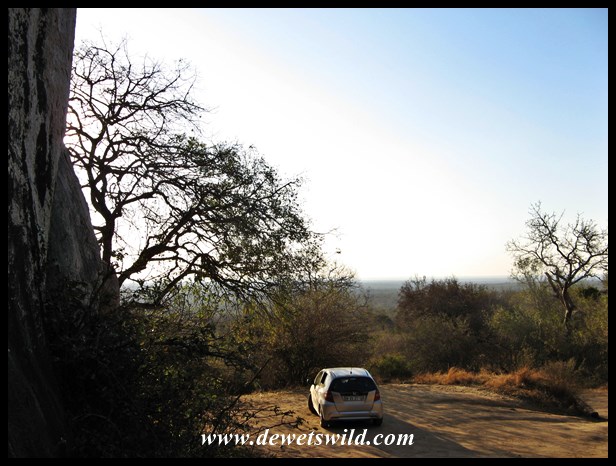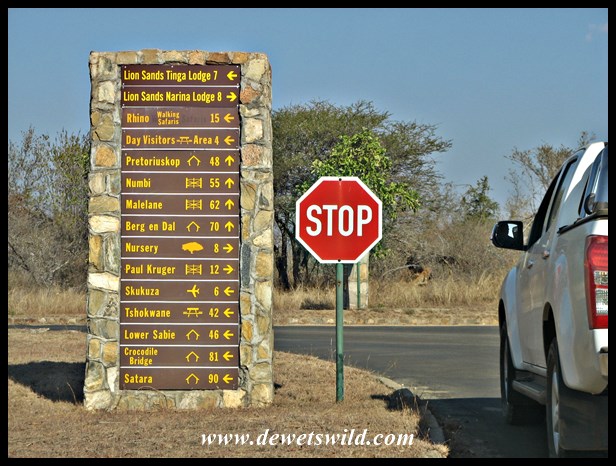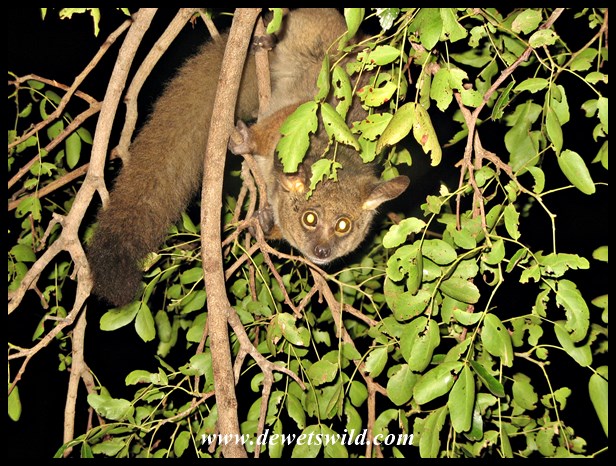Kruger’s capital, and monument to a conservation stalwart.
Today, Skukuza Rest Camp is the biggest and busiest tourist facility in the Kruger National Park, the Park’s administrative headquarters and a world-leading centre of scientific research in the field of nature conservation. The rest camp has a long and rich history dating back more than a 100 years and it shares much of this history with one man, to whom more than any other should go the credit for the establishment of this world renowned Park.
At the end of the South African War, Major (later Colonel) James Stevenson-Hamilton was appointed to the position of warden of the Sabie Game Reserve; a loosely defined piece of land between the Sabie River in the North, the Crocodile River in the South, the foothills of the Drakensberg in the West and the Lebombo Mountains in the East that was proclaimed a game sanctuary by president Paul Kruger of the (then still independent) Zuid-Afrikaansche Republiek, some months before hostilities broke out with the British.
Stevenson-Hamilton, born in October 1867, arrived at his new station in July of 1902, soon setting up his office at Sabie Bridge, the place where the Selati Railway crossed the Sabie River. It was the local Shangaan population that gave Stevenson-Hamilton his nickname of “Skukuza“, meaning “he who sweeps clean” or “he who turns everything upside down“. Against considerable odds, piled up against him from politicians, mining houses and wealthy landowners, the plucky Scotsman managed to considerably enlarge the area under his jurisdiction, expand his powers of law enforcement, and won considerable support from the South African public, culminating in the proclamation of the Kruger National Park by Minister of Lands, Piet Grobler, on the 31st of May 1926.
The Kruger National Park was opened to the public in 1927, and by 1929 the first purpose-built accommodation facilities at Sabie Bridge, or “Reserve” as it became known, housed their first guests. The first hut, named the “Campbell Hut” after W.A. Campbell, a founding member of the National Parks Board, has been preserved as a tiny museum showcasing the early years of tourism in the Kruger Park, and is located near Skukuza’s restaurant. In those early years, visitors could enjoy (or dread) crossing the Sabie on a rickety pontoon, which was only replaced by a low-level causeway (still in use today) in 1937.

Campbell Museum Hut
In 1936, the camp at Sabie Bridge / Reserve was renamed to Skukuza, in honour of Colonel Stevenson-Hamilton, then still firmly at the helm of the National Park he referred to as a “Cinderella” in his memoirs “South African Eden”. Stevenson-Hamilton retired from the position of Warden in April of 1946, at the age of 78 and after 44 years of dedicated service, leaving an enduring legacy enjoyed by millions of people from all over the world to this day. He passed away on the 10th of December 1957, aged 90. After the death of his wife Hilda, the couple’s ashes were strewn over the boulders at Shirimantanga, to the south of Skukuza at a place Stevenson-Hamilton chose himself, in April 1979. Today, Shirimantanga is a popular, if sombre, place to visit for many of the Kruger faithful.

Shirimantanga Hill, final resting place of James and Hilda Stevenson-Hamilton

The view from Shirimantanga
Stevenson-Hamilton would probably not recognise much of the modern Skukuza, the view of the majestic railway bridge over the Sabie probably being all that will seem familiar from his first years in the Reserve. In addition to a dormitory that can house dozens of learners and their teachers on educational visits to the Kruger Park, Skukuza can accommodate 745 guests in 240 accommodation units, as well as over 500 campers making use of their own tents or caravans. The camp has most of the facilities you’d expect to find in a medium-sized town, and then some. It is the scene for the annual Skukuza Half Marathon, one of the country’s most popular running events. Skukuza’s airport receives several daily flights to and from Johannesburg and Cape Town. The camp has a doctor, police station, church, shop, two restaurants, fuel station and vehicle repair facilities, a golf course with a club house serving light refreshments, a dedicated day visitors area (complete with picnic sites, swimming pool and kiosk), a primary school for staff children, and a nursery where indigenous plants are propagated and sold to visitors. The impressive main building, opened in 1989, houses the reception and reservation offices, car hire company, bank and post office, and many a family portrait has been taken in front of the sculpted faces of the Kruger Park’s “founding fathers” that adorn one side of the building.
The Nombolo Mdhluli Conference Centre is a state-of-the-art facility, named in honour of a man who joined Stevenson-Hamilton staff as a field ranger in 1919, only retiring 52 years later in 1971 and widely acknowledged as a treasure trove of information about Kruger’s formative years. The Kruger National Park Museum is housed in the Stevenson-Hamilton Memorial Library, built in 1961, and showcases many fascinating Kruger memorabilia, including the skin of the lion that attempted to kill Ranger Harry Wolhuter. The statue of Stevenson-Hamilton at the entrance was sculpted by his very artistic wife, Hilda. At the back of the library building stands another well-known Skukuza landmark, the clocktower erected in honour of H.B. Papenfuss, a staunch campaigner for the proclamation of the Kruger Park and also a founding member of the National Parks Board. Near the museum’s entrance the “Little Heroes Acre” is a collection of grave stones commemorating many of the dogs that faithfully served with several of the Kruger Park’s game rangers over the years.
As far as roads are concerned, it may seem that all roads in Kruger lead to Skukuza. The entire area around the camp is a game-viewers heaven (it is often mentioned that Skukuza has the highest density of leopard anywhere in Africa, and we’d certainly agree), and they are spoiled for choice when it comes to the routes radiating from the camp.

Road signpost at Skukuza
Heading northwards, the H1-2 route crosses first the Sabie and then the Sand Rivers, heading for Tshokwane Picnic Site and Satara Rest Camp (or Orpen Rest Camp, along the S36-gravel road), with the rest of the Kruger National Park lying beyond. Along the way, dont miss the chance to explore the Maroela Loop, where I had probably my best leopard sighting ever!
The H4-1 road to Nkuhlu Picnic Site and Lower Sabie Rest Camp to the south-east of Skukuza, following the course of the Sabie River, is by far the most popular route in the entire Park (it’s along this stretch of road that we enjoyed our marvelous sighting of a large pride of lions during our August 2014 visit to Skukuza).
Towards the west, the roads head in the direction of three popular entrance gates into the southern Kruger Park, all allowing easy access to Skukuza. The H11 to Kruger Gate offers a worthwile deviation to the photographic hide at Lake Panic, the S1-tar road and S3-gravel roads lead to Phabeni Gate, and the H1-1 leads to Pretoriuskop Rest Camp and Numbi Gate nearby, past the well frequented (by humans and wildlife alike) Transport and Shitlhave Dams and the grand granite view point at Mathekenyane.
Finally, the H3-tar and S114 gravel roads, both with several interesting side loops (to Shirimantanga for example), take visitors to Afsaal Picnic Spot and the mountainous terrain around Berg-en-Dal Rest Camp and Malelane Gate.
To many people, Skukuza is simply too big and too busy to provide the escape “away from it all” they come to seek in the Kruger National Park. During the day, when the camp is positively vibrant with visitors from all over the world enjoying the excellent amenities and calming view over the Sabie River flowing in front of the camp, that may well be true. We’ve always found however that when dusk settles over Skukuza at gate closing time, so does the peace and serenity that’s become synonymous with Stevenson-Hamilton’s “South African Eden“…

At night, Skukuza’s bushbabies come out to play
















































































Pingback: On our way to the wilderness – day 3 | de Wets Wild
Pingback: A thousand posts on de Wets Wild! | de Wets Wild
I’ve got Skukuza going round and round in my brain!! 😉
Weereens lekker gelees!! Dankie!! 😉
LikeLiked by 1 person
Skukuza bly maar vir baie mense hul eerste herinnering aan die Krugerwildtuin, ne AJ?
LikeLike
Pingback: Winter in Southern Kruger | de Wets Wild
Pingback: Muse | de Wets Wild
Pingback: Enveloped | de Wets Wild
Julle laat weer eens my hart ‘n punt laat trek! 😉
LikeLike
Baie dankie dat jy weer van jou tyd saam met ons spandeer het AJ, ons waardeer dit!
LikeLiked by 1 person
Ek kan nie wegbly nie!!! Al probeer ek!! 😉
LikeLike
Moet net nie te hard probeer wegbly nie asseblief!
LikeLike
Pingback: A quick sojourn to Skukuza | de Wets Wild
Pingback: The stork is making deliveries in Kruger! | de Wets Wild
Pingback: Achievement | de Wets Wild
Pingback: Satara Rest Camp, Kruger National Park | de Wets Wild
Pragtig gedoen! Jy het die geskiedenis so interessant saamgevat en jou foto’s is pragtig.Julle is ware ambassadeurs vir SA se natuurlewe.Ek sien dit aan die positiewe kommentare.
LikeLike
Baie dankie Dina, dit beteken vir ons baie!
LikeLike
Most interesting history and your photos are phenomenal! I remember giving my mother a quite the fright back in the 60s when I was a teen and told her I wanted to go work at Kruger with the wildlife! I’ve never made it there for a visit — yet! After all, I’m still breathing, so who knows! LOL!
LikeLike
Keep chasing that dream Linda, you will not be disappointed! Kruger is waiting for you 🙂
LikeLiked by 1 person
Amazing photos of an amazing place…unfortunately time does not stop, but it still looks like a beautiful park and place to see some wonderful animals…
LikeLike
Kruger Park certainly remains an amazing place, and most of what we can still enjoy today is due to the hard work of James Stevenson-Hamilton so many decades ago, and the dedication of those that followed!
LikeLiked by 1 person
Wow, so much to comment on here. Congratulations on your best-ever leopard sighting. We have to wonder how it compares to that rhino sighting! And please tell us more about the “Roller on the H3” — what a beautiful bird. A big hats off to Maj. Stevenson-Hamilton 🙂
LikeLike
Thanks very much, Jean & Alex!
South Africa, and the world, owes a bug debt of gratitude to James Stevenson-Hamilton for ensuring the preservation of the wonderous Kruger National Park, that’s for sure.
That leopard sighting in 2012 was pretty special; enjoyed watching a mating pair for over 20 minutes without having any other visitors around and got some great photographs.
And the rollers are certainly very beautiful birds – in flight even more so as the colours of their wing feathers are brilliant. There are several species in South Africa, this one being of the Lilac-breasted variety.
Thanks again for stopping by!
LikeLiked by 1 person
Pingback: Skukuza Rest Camp, Kruger National Park
Oh, what is NOT to like ? – to LOVE ??!
Another in the continuing saga of the de Wets’ adventures in The Magic Faraway Animal Land – for which, unrestricted thanks !!! Just keep on providing more of the same, and I’m happy ! 😀
LikeLike
Since you ask so nicely Margaret-Rose, we’ll be heading to the bush for more in two weeks time 😀
Hope you don’t mind us using you as an excuse to stay away from work 😀
Thanks very much for another kind contribution to our blog!
LikeLiked by 1 person
What a grand tour of the park! Thank you so much. Love these magnificent captures.
LikeLike
We’re glad you hopped onto the safari vehicle with us, Amy!
LikeLike
Pure magic, in every way.
You have given a commendably comprehensive coverage!
LikeLike
Hard to imagine the Kruger Park without good old Skukuza, hey Colonialist?
LikeLike